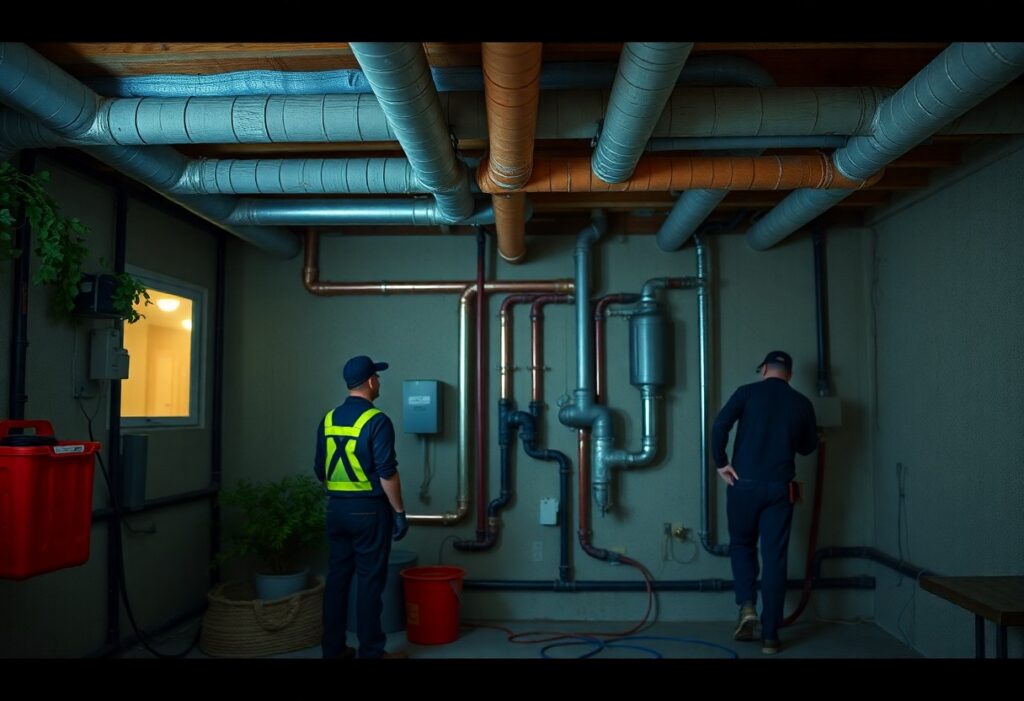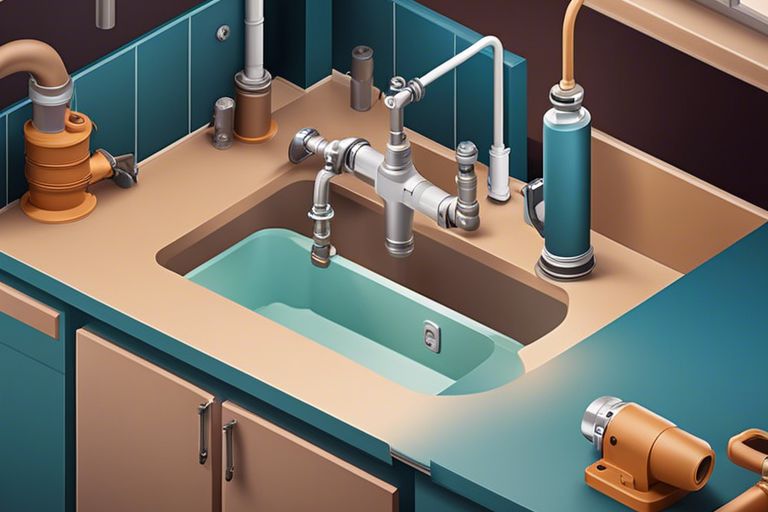Whole House Repiping: Is It Time for Your Buena Park Home?

If you’re experiencing low water pressure, discolored water, or frequent leaks in your Buena Park home, it may be time to consider whole house repiping. This process involves replacing all the pipes in your home, which can seem daunting, but it’s often the most effective solution to avoid costly repairs and even safety hazards. In this post, we’ll guide you through the signs that indicate you need whole house repiping, the benefits of this process, and what to expect during the replacement process. If you’re concerned about your home’s plumbing, call Plumbing Solution Specialist for a free quote at (888) 973-5422 to determine if whole house repiping is right for you. Key Takeaways: When considering whole house repiping in your Buena Park home, there are several factors to consider. Here are three key takeaways to help you determine if it’s time for a repipe: Aging Pipes: If your home’s pipes are nearing or have exceeded their expected lifespan (typically 50-70 years for galvanized pipes and 70-90 years for copper pipes), it may be time to consider whole house repiping. Corroded, rusty, or damaged pipes can lead to leaks, water damage, and contaminated water. Low Water Pressure: If you’ve noticed a decrease in water pressure throughout your home, it could be a sign that your pipes are clogged or restricted. Whole house repiping can help restore proper water pressure and flow, making daily tasks like showering and washing dishes more efficient. Recurring Leaks and Repairs: If you’re tired of dealing with frequent leaks and repairs, whole house repiping may be the best solution. By replacing all the pipes at once, you can avoid the hassle and expense of ongoing repairs and enjoy a leak-free home for years to come. If you’re experiencing any of these issues, it may be time to consider whole house repiping for your Buena Park home. Call Plumbing Solution Specialist at (888) 973-5422 for a free quote and to learn more about our whole house repiping services. Our team of experts can help you determine the best course of action for your home’s unique needs. Identifying the Need for Whole House Repiping The decision to repipe your entire house may seem daunting, but it’s imperative to address pipe damage before it leads to more severe consequences. By recognizing the signs of pipe damage and understanding the factors contributing to pipe failure, you can take proactive steps to protect your Buena Park home. Common Signs of Pipe Damage For homeowners, it’s imperative to be aware of the common signs of pipe damage, including low water pressure, discolored water, and strange noises coming from your pipes. If you notice any of these signs, it may be time to consider whole house repiping. Factors Contributing to Pipe Failure The factors contributing to pipe failure can be diverse, but some of the most common include corrosion, scale buildup, and high water pressure. Recognizing these factors can help you take preventative measures to extend the life of your pipes. To better understand the factors contributing to pipe failure: Aging pipes: As your pipes age, they become more susceptible to damage and corrosion. Harsh water conditions: Water with high levels of minerals can lead to scale buildup and corrosion. Improper installation: If your pipes were not installed correctly, they may be more prone to damage and failure. To extend the life of your pipes, it’s imperative to address these factors head-on. By doing so, you can avoid the need for costly repairs and replacements. Recognizing the signs of pipe damage and understanding the factors contributing to pipe failure can help you make informed decisions about your plumbing system. Don’t wait until it’s too late – Call Plumbing Solution Specialist for a Free Quote today at (888) 973-5422 to schedule your whole house repiping consultation. How to Determine If You Need Whole House Repiping Assuming you’re experiencing frequent plumbing issues, it’s crucial to assess your home’s piping system. Start by educating yourself on Repipe Information & helpful facts for Homeowners. This will give you a better understanding of the signs that indicate whole house repiping is necessary. Tips for Inspecting Your Pipes Need to inspect your pipes? Look for signs of wear and tear, corrosion, or damage. Check for low water pressure, discolored water, and leaks under sinks, toilets, and around water heaters. Knowing these warning signs will help you identify potential problems early on. Low water pressure Discolored water Leaks under sinks, toilets, and around water heaters Key Indicators of Widespread Pipe Damage With whole house repiping, it’s crucial to identify the extent of pipe damage. If you notice multiple areas of damage, it may be more cost-effective to replace the entire system. For instance, if you’ve experienced frequent pipe bursts, water damage, or mold growth, it may be a sign of widespread pipe damage. Additionally, if you have an older home with outdated pipes, such as galvanized or lead pipes, it’s likely that whole house repiping is necessary. If you’re unsure about the condition of your pipes, call a Plumbing Solution Specialist for a free quote at (888) 973-5422. Our experts will assess your home’s piping system and provide personalized recommendations for whole house repiping. Factors to Consider Before Repiping Your Home Once again, it’s necessary to weigh the pros and cons before making a decision. You need to consider several factors that will impact the repiping process and its outcome. These include: Age and material of existing pipes Water quality and pressure issues Cost and budget constraints Assume that you’ve considered these factors, and you’re ready to move forward with the repiping process. Age and Material of Existing Pipes An old or corroded piping system can lead to leaks, contamination, and other issues. If your pipes are nearing the end of their lifespan or are made of outdated materials like galvanized steel or lead, it may be time to consider repiping. Water Quality and Pressure Issues low water pressure, it may be due to mineral buildup or pipe damage, which
Step-by-Step Guide To Whole House Repiping – What To Expect

Most importantly, understanding the whole house repiping process can save you time and money. Repiping your entire home can seem like a daunting task, but with this step-by-step guide, you will know exactly what to expect. From the initial assessment to the final inspection, replacing all the pipes in your home is a significant project that requires careful planning and execution. Here’s what you can anticipate throughout the repiping process. Key Takeaways: Assessment: A professional plumber will assess the existing plumbing system to determine the extent of the damage and the best course of action for repiping. Material Options: You’ll have different material options for repiping your house, such as copper, PEX, or CPVC, each with its own pros and cons. Process: The repiping process involves shutting off water, removing old pipes, installing new pipes, and restoring water flow, which can take a few days to complete. Understanding Whole House Repiping What is Whole House Repiping? One of the biggest plumbing projects you may face as a homeowner is whole house repiping. This process involves replacing all the pipes in your home with new ones. Over time, your pipes can deteriorate due to age, corrosion, or mineral buildup, leading to leaks, low water pressure, and other issues. Whole house repiping is a comprehensive solution to upgrade your plumbing system and ensure the efficient flow of water throughout your home. Why is Whole House Repiping Necessary? For many homeowners, the idea of whole house repiping can seem daunting. However, it is necessary when your current pipes are old, damaged, or causing recurring problems. Old pipes are more prone to leaks, burst pipes, and water damage, which can result in costly repairs and potential health hazards. Repiping your home can improve your water quality, increase water pressure, and prevent future plumbing emergencies, giving you peace of mind and a more functional plumbing system. Types of Piping Materials Now, when it comes to whole house repiping, there are several piping materials that you can choose from. Each material has its own unique properties, pros, and cons, so it’s important to understand the differences between them before making a decision. Here are some of the most common piping materials used in whole house repiping: Copper Piping Piping made of copper is a popular choice for repiping projects due to its durability and resistance to corrosion. Copper piping is known for its long lifespan, typically lasting up to 50 years or more with proper maintenance. It is also a safe option for carrying drinking water, as copper does not leach harmful chemicals into your water supply. If you choose copper piping for your whole house repiping project, you can expect a reliable and long-lasting solution for your plumbing system. The initial cost of copper piping may be higher compared to other materials, but the investment is worth it in the long run due to its durability and low maintenance requirements. Any repairs or replacements needed for copper piping are typically straightforward and less frequent compared to other materials. PEX Piping If you are looking for a more cost-effective and flexible piping material for your whole house repiping project, PEX piping is a popular choice. PEX piping is made of cross-linked polyethylene, making it resistant to chemicals and extreme temperatures. The flexibility of PEX piping allows for easy installation around corners and obstacles, reducing the need for additional fittings and connections. Materials: | Pros: | — | — Copper | – Durable and corrosion-resistant | PEX | – Cost-effective and flexible | Galvanized | – Strong and reliable | PVC | – Lightweight and easy to install | Steel | – Resistant to extreme temperatures | Galvanized Piping To ensure a strong and reliable plumbing system, you may consider using galvanized piping for your whole house repiping project. Galvanized piping is made of steel pipes coated with a layer of zinc, making it resistant to corrosion and rust. This type of piping is commonly used in older homes and can last up to 50 years with proper maintenance. Copper piping is a great option for whole house repiping due to its durability and resistance to corrosion. It is a safe choice for carrying drinking water, as copper does not leach harmful chemicals into your water supply. If you opt for copper piping, you can expect a reliable and long-lasting plumbing system that requires minimal maintenance. PVC Piping Little maintenance and a lightweight option for whole house repiping project, PVC piping is a popular choice for its affordability and ease of installation. PVC piping is resistant to corrosion and chemicals, making it a durable option for your plumbing system. It is also lightweight and easy to work with, reducing labor costs and installation time. Understanding the differences between various piping materials will help you make an informed decision for your whole house repiping project. Each material has its own set of benefits and drawbacks, so consider your budget, needs, and preferences before selecting the right piping material for your home. Do not forget, investing in high-quality piping materials will ensure a reliable and efficient plumbing system for years to come. Factors to Consider Before Repiping Unlike minor plumbing repairs, whole house repiping is a major undertaking that requires careful consideration. Before deciding to repipe your home, there are several factors you should take into account to ensure the process goes smoothly and meets your needs. Age and Condition of Existing Pipes For whole house repiping, the age and condition of your existing pipes play a crucial role in determining whether you need to replace them. If your home has old galvanized pipes that are showing signs of corrosion, leaks, or frequent clogs, it may be time to consider repiping. Knowing the materials used in your current piping system and their condition will help you make an informed decision about whether repiping is necessary. Water Quality and Pressure There’s more to repiping than just replacing old pipes. Water quality and pressure are also important factors to consider
